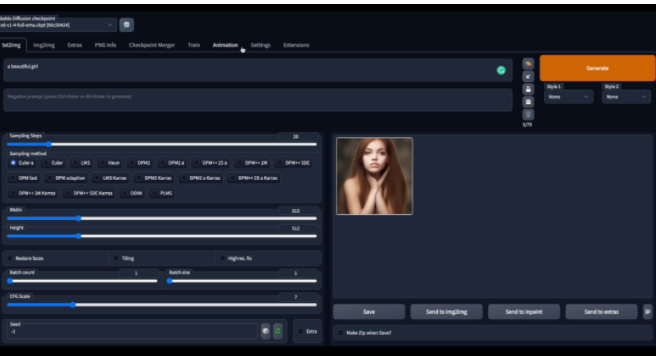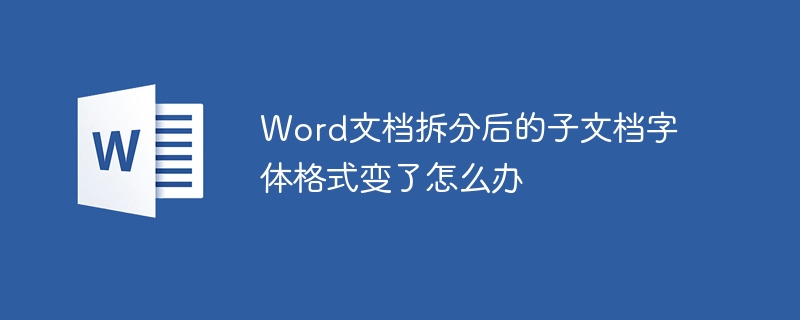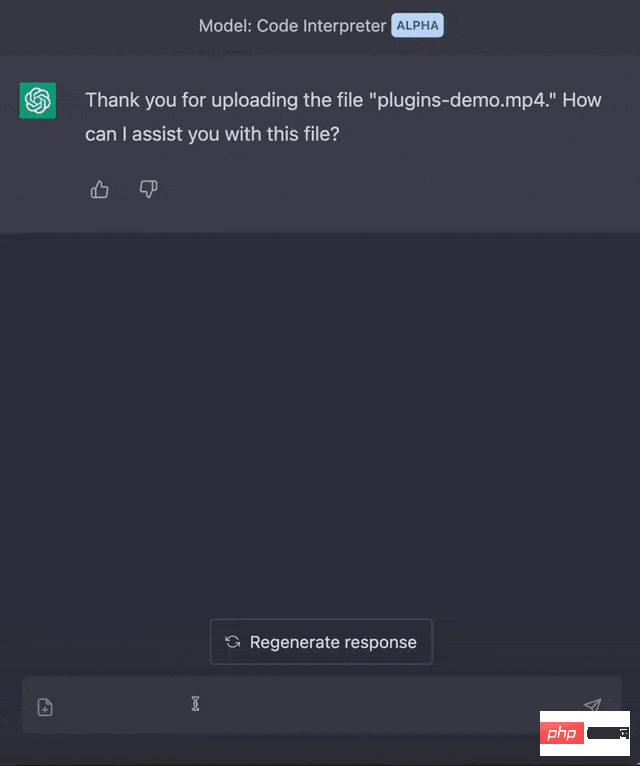
How to use ChatGPT and Java to develop an intelligent image recognition system
In recent years, the rapid development of artificial intelligence technology has brought huge breakthroughs to many fields. Among them, image recognition technology plays an important role in the field of computer vision. And if we can combine image recognition technology with natural language processing, it will further enhance the intelligence of the system.
This article will introduce how to use ChatGPT and Java to develop an intelligent image recognition system. The system can input a picture and output a description of the picture. The specific steps are as follows:
- Prepare the development environment
First, we need to prepare the Java development environment. Please make sure you have installed the Java Development Kit (JDK) and can run Java applications normally.
Next, we need to introduce the Java library of ChatGPT. ChatGPT is a language model-based dialogue engine developed by OpenAI, which can realize human-computer dialogue interaction. You can register on the OpenAI official website to apply for an API key, and import the ChatGPT Java library into your project.
- Implementation of image recognition function
In order to realize the image recognition function, we can use Java's image processing library to implement it. Here we take Java's OpenCV library as an example. OpenCV is an open source computer vision library that provides the implementation of many image processing and computer vision algorithms.
First, we need to import the OpenCV Java library and load the image. For example, we can use the following code to achieve:
import org.opencv.core.Core;
import org.opencv.core.Mat;
import org.opencv.core.MatOfByte;
import org.opencv.core.MatOfFloat;
import org.opencv.core.MatOfRect;
import org.opencv.core.MatOfInt;
import org.opencv.core.Point;
import org.opencv.core.Rect;
import org.opencv.core.Scalar;
import org.opencv.core.Size;
import org.opencv.dnn.Net;
import org.opencv.dnn.Dnn;
import org.opencv.dnn.Dnn;
import org.opencv.dnn.Layer;
import org.opencv.dnn.Net;
import org.opencv.dnn.Dnn;
import org.opencv.dnn.Net;
public class ImageRecognition {
static {
System.loadLibrary(Core.NATIVE_LIBRARY_NAME);
}
public static void main(String[] args) {
// Load the image
Mat image = Imgcodecs.imread("path/to/image.jpg");
// Perform image recognition
// ...
// Display the output
// ...
}
}Next, we need to choose a suitable image recognition model to load and use. In this article, we choose to use the deep learning-based image recognition model provided by OpenCV. We can use the following code to load the model:
Net net = Dnn.readNetFromCaffe("path/to/model.prototxt", "path/to/model.caffemodel");Then, we can use the following code to perform image recognition and obtain the description information of the image:
Mat blob = Dnn.blobFromImage(image, 1.0, new Size(224, 224), new Scalar(104.0, 117.0, 123.0), false);
net.setInput(blob);
Mat detections = net.forward();
MatOfInt indices = new MatOfInt();
MatOfFloat confidence = new MatOfFloat();
MatOfRect boxes = new MatOfRect();
Dnn.NMSBoxes(boxes, confidence, 0.5f, 0.3f, indices);
for (int i = 0; i < indices.total(); ++i) {
int idx = (int) indices.get(i, 0)[0];
Rect box = boxes.toArray()[idx];
// Process the detection results
// ...
}In the above code, we first use Dnn.blobFromImage Function converts an image into a format acceptable to the network. Then, we take the converted image as input and call the forward method of the network to obtain the output of the network. Finally, we use the Dnn.NMSBoxes function to process the output and obtain the recognition results.
- Natural language processing combined with ChatGPT
After using Java for image recognition, we hope to convert the recognition results into natural language description. To achieve this functionality, we can use ChatGPT for natural language processing.
First, we need to convert the recognition results into a format that can be processed by natural language. For example, you can pass the recognition results as input to ChatGPT and then get the generated text as the system's reply. The following is a sample code:
// Convert detection results to text
String resultText = convertDetectionResultsToText(detections);
// Initialize ChatGPT
ChatGPT chatGPT = new ChatGPT(apiKey);
// Generate text response
String response = chatGPT.generateResponse(resultText);
System.out.println("Image description: " + response);In the above code, we first convert the recognition results of the image into text data. We can then use ChatGPT's generateResponse method to generate the system's reply text.
- Conclusion
By combining ChatGPT and Java to develop an intelligent image recognition system, we can achieve automatic description of images. This kind of system can be widely used not only in the fields of image processing and computer vision, but also in many other fields, such as autonomous driving, assisted medical care, etc.
However, this is just an example of an image recognition system, and more challenges and complexities may be encountered in actual development. I hope this article can provide some inspiration and help to readers, and provide them with some ideas and guidance for developing intelligent image recognition systems.
The above is the detailed content of How to develop an intelligent image recognition system using ChatGPT and Java. For more information, please follow other related articles on the PHP Chinese website!
 令人惊艳的4个ChatGPT项目,开源了!Mar 30, 2023 pm 02:11 PM
令人惊艳的4个ChatGPT项目,开源了!Mar 30, 2023 pm 02:11 PM自从 ChatGPT、Stable Diffusion 发布以来,各种相关开源项目百花齐放,着实让人应接不暇。今天,着重挑选几个优质的开源项目分享给大家,对我们的日常工作、学习生活,都会有很大的帮助。
 Word文档拆分后的子文档字体格式变了怎么办Feb 07, 2023 am 11:40 AM
Word文档拆分后的子文档字体格式变了怎么办Feb 07, 2023 am 11:40 AMWord文档拆分后的子文档字体格式变了的解决办法:1、在大纲模式拆分文档前,先选中正文内容创建一个新的样式,给样式取一个与众不同的名字;2、选中第二段正文内容,通过选择相似文本的功能将剩余正文内容全部设置为新建样式格式;3、进入大纲模式进行文档拆分,操作完成后打开子文档,正文字体格式就是拆分前新建的样式内容。
 学术专用版ChatGPT火了,一键完成论文润色、代码解释、报告生成Apr 04, 2023 pm 01:05 PM
学术专用版ChatGPT火了,一键完成论文润色、代码解释、报告生成Apr 04, 2023 pm 01:05 PM用 ChatGPT 辅助写论文这件事,越来越靠谱了。 ChatGPT 发布以来,各个领域的从业者都在探索 ChatGPT 的应用前景,挖掘它的潜力。其中,学术文本的理解与编辑是一种极具挑战性的应用场景,因为学术文本需要较高的专业性、严谨性等,有时还需要处理公式、代码、图谱等特殊的内容格式。现在,一个名为「ChatGPT 学术优化(chatgpt_academic)」的新项目在 GitHub 上爆火,上线几天就在 GitHub 上狂揽上万 Star。项目地址:https://github.com/
 vscode配置中文插件,带你无需注册体验ChatGPT!Dec 16, 2022 pm 07:51 PM
vscode配置中文插件,带你无需注册体验ChatGPT!Dec 16, 2022 pm 07:51 PM面对一夜爆火的 ChatGPT ,我最终也没抵得住诱惑,决定体验一下,不过这玩意要注册需要外国手机号以及科学上网,将许多人拦在门外,本篇博客将体验当下爆火的 ChatGPT 以及无需注册和科学上网,拿来即用的 ChatGPT 使用攻略,快来试试吧!
 30行Python代码就可以调用ChatGPT API总结论文的主要内容Apr 04, 2023 pm 12:05 PM
30行Python代码就可以调用ChatGPT API总结论文的主要内容Apr 04, 2023 pm 12:05 PM阅读论文可以说是我们的日常工作之一,论文的数量太多,我们如何快速阅读归纳呢?自从ChatGPT出现以后,有很多阅读论文的服务可以使用。其实使用ChatGPT API非常简单,我们只用30行python代码就可以在本地搭建一个自己的应用。 阅读论文可以说是我们的日常工作之一,论文的数量太多,我们如何快速阅读归纳呢?自从ChatGPT出现以后,有很多阅读论文的服务可以使用。其实使用ChatGPT API非常简单,我们只用30行python代码就可以在本地搭建一个自己的应用。使用 Python 和 C
 用ChatGPT秒建大模型!OpenAI全新插件杀疯了,接入代码解释器一键getApr 04, 2023 am 11:30 AM
用ChatGPT秒建大模型!OpenAI全新插件杀疯了,接入代码解释器一键getApr 04, 2023 am 11:30 AMChatGPT可以联网后,OpenAI还火速介绍了一款代码生成器,在这个插件的加持下,ChatGPT甚至可以自己生成机器学习模型了。 上周五,OpenAI刚刚宣布了惊爆的消息,ChatGPT可以联网,接入第三方插件了!而除了第三方插件,OpenAI也介绍了一款自家的插件「代码解释器」,并给出了几个特别的用例:解决定量和定性的数学问题;进行数据分析和可视化;快速转换文件格式。此外,Greg Brockman演示了ChatGPT还可以对上传视频文件进行处理。而一位叫Andrew Mayne的畅销作
 ChatGPT教我学习PHP中AOP的实现(附代码)Mar 30, 2023 am 10:45 AM
ChatGPT教我学习PHP中AOP的实现(附代码)Mar 30, 2023 am 10:45 AM本篇文章给大家带来了关于php的相关知识,其中主要介绍了我是怎么用ChatGPT学习PHP中AOP的实现,感兴趣的朋友下面一起来看一下吧,希望对大家有帮助。


Hot AI Tools

Undresser.AI Undress
AI-powered app for creating realistic nude photos

AI Clothes Remover
Online AI tool for removing clothes from photos.

Undress AI Tool
Undress images for free

Clothoff.io
AI clothes remover

AI Hentai Generator
Generate AI Hentai for free.

Hot Article

Hot Tools

mPDF
mPDF is a PHP library that can generate PDF files from UTF-8 encoded HTML. The original author, Ian Back, wrote mPDF to output PDF files "on the fly" from his website and handle different languages. It is slower than original scripts like HTML2FPDF and produces larger files when using Unicode fonts, but supports CSS styles etc. and has a lot of enhancements. Supports almost all languages, including RTL (Arabic and Hebrew) and CJK (Chinese, Japanese and Korean). Supports nested block-level elements (such as P, DIV),

SublimeText3 English version
Recommended: Win version, supports code prompts!

MinGW - Minimalist GNU for Windows
This project is in the process of being migrated to osdn.net/projects/mingw, you can continue to follow us there. MinGW: A native Windows port of the GNU Compiler Collection (GCC), freely distributable import libraries and header files for building native Windows applications; includes extensions to the MSVC runtime to support C99 functionality. All MinGW software can run on 64-bit Windows platforms.

ZendStudio 13.5.1 Mac
Powerful PHP integrated development environment

Zend Studio 13.0.1
Powerful PHP integrated development environment






